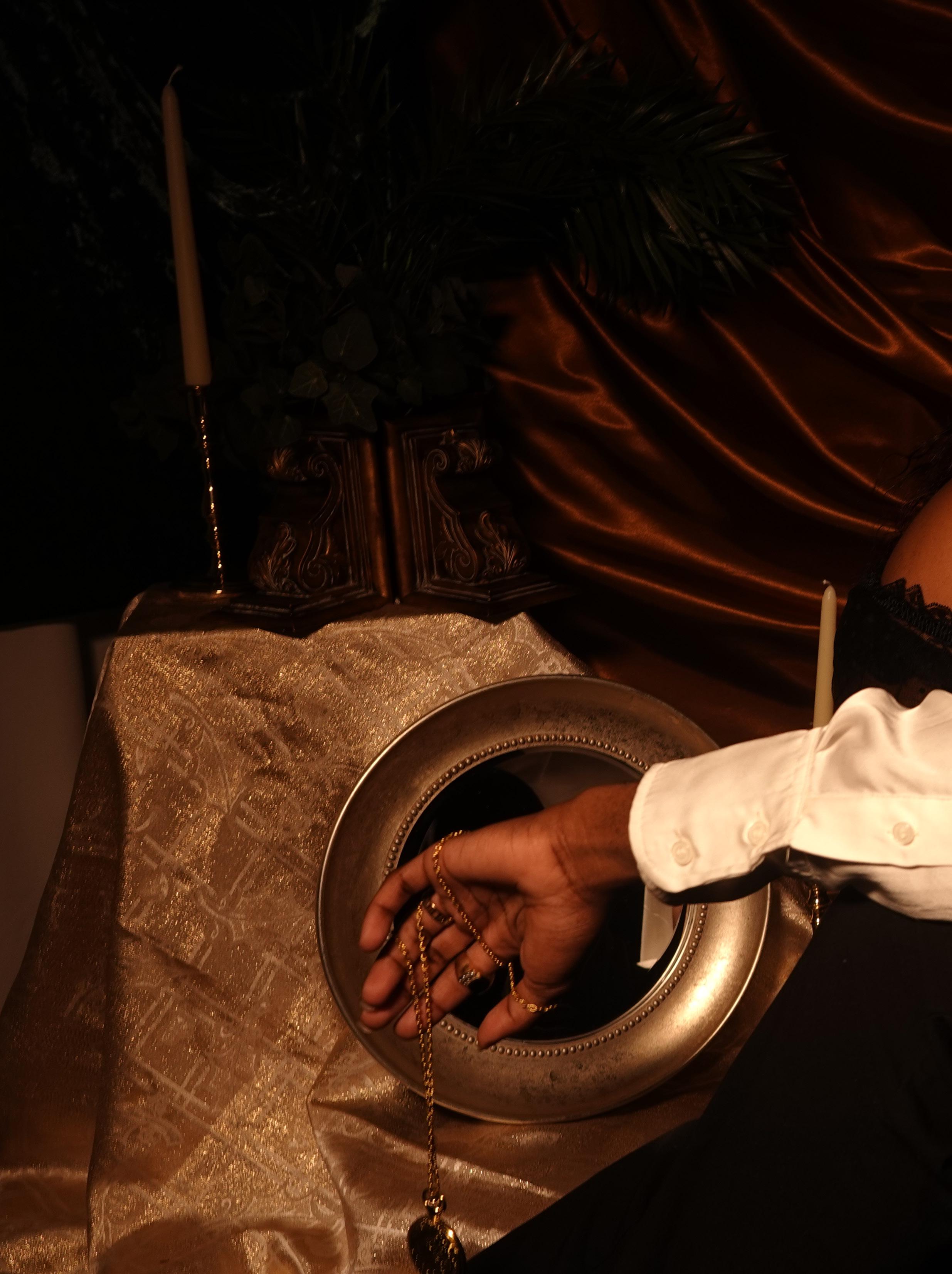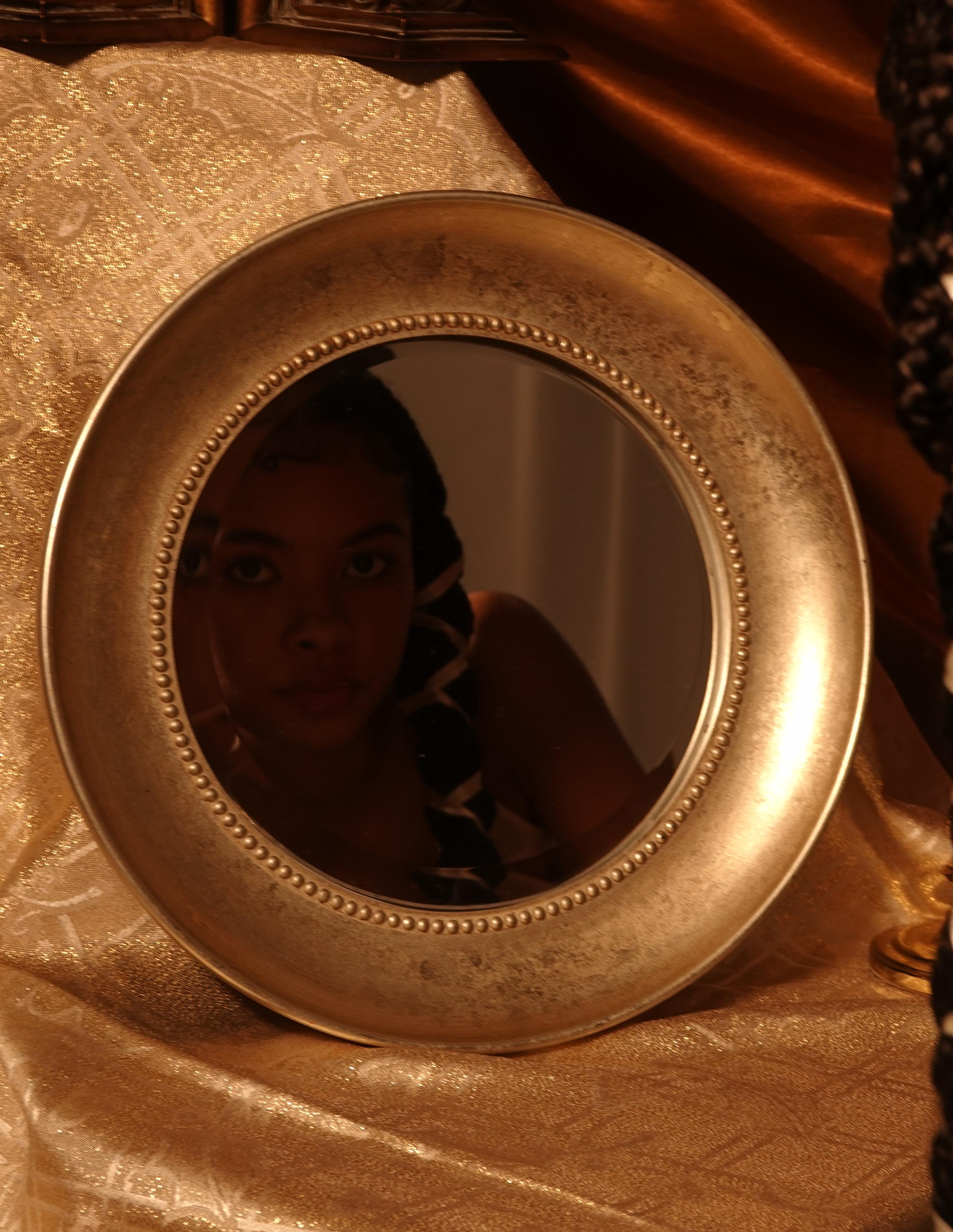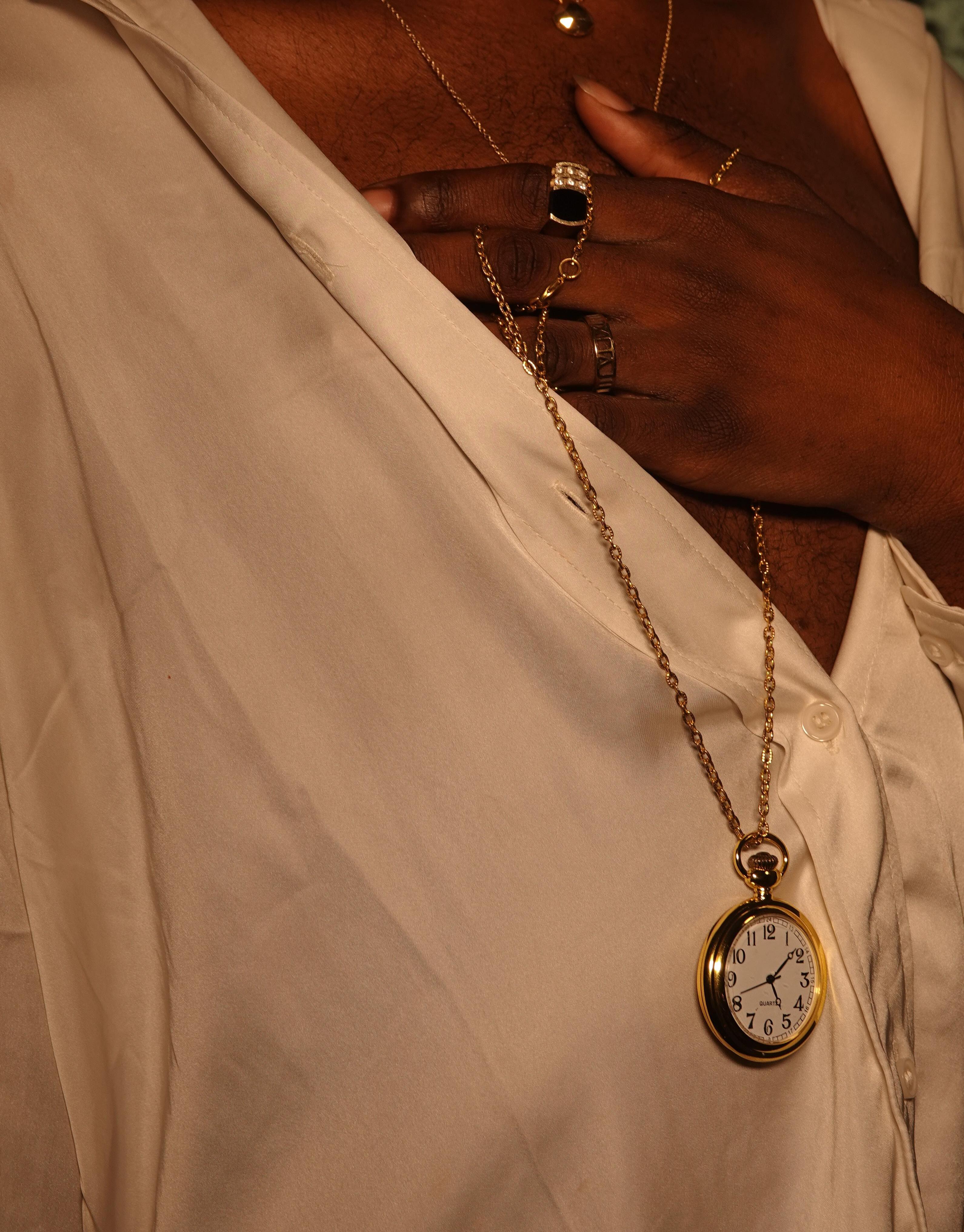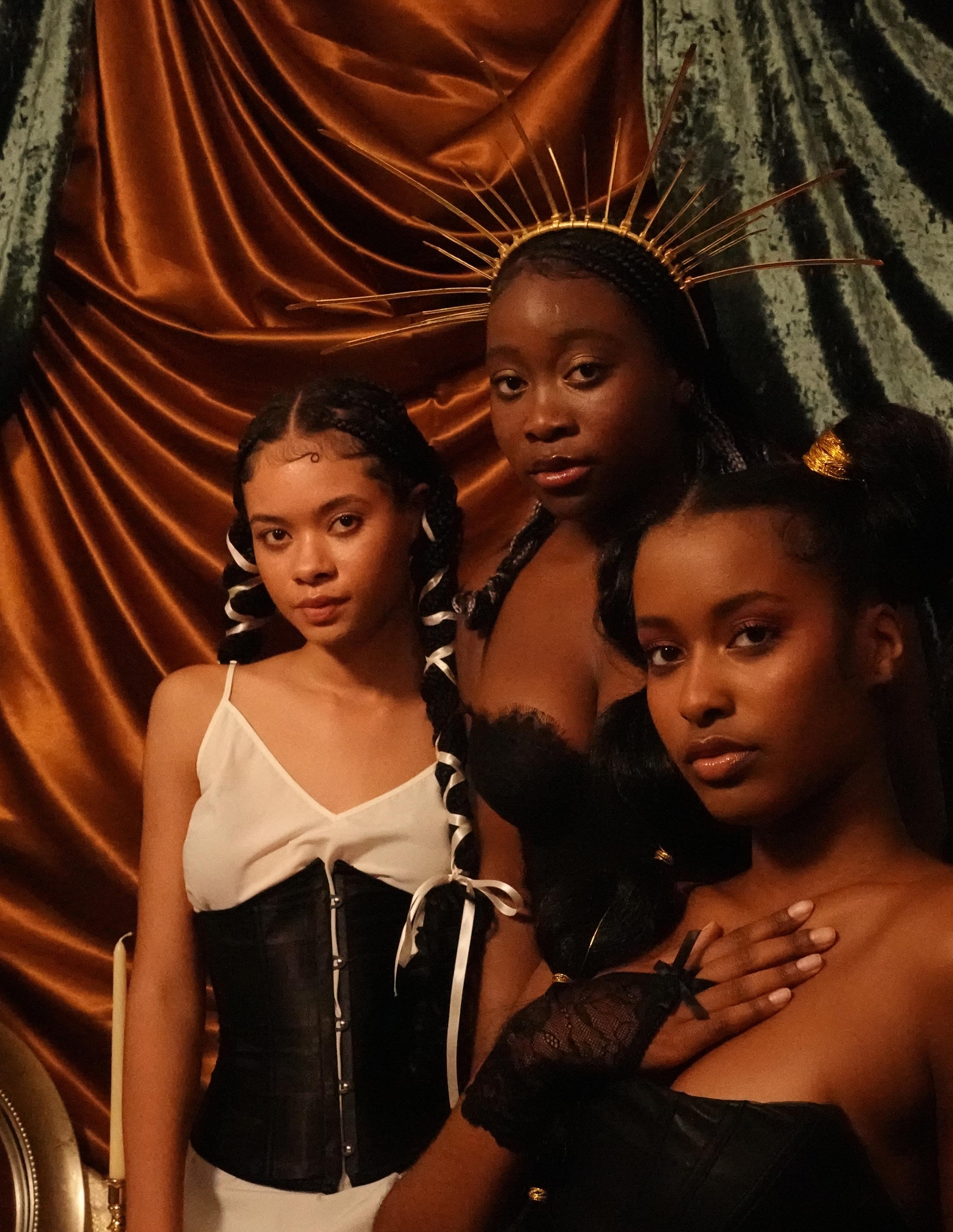blackstar*







Creative Team
Graphic Design & Layout
Maya Joseph
Photo Editing & Social Media
Tasya Washington
Hairstylist
Nyah Rene
Makeup Artist
Kayla Robinson
Production
Zikora Mbadugha
Zahmyre Lorenzo
Social Media
Ezinne Ifi
Photography
Addie Zwicker-Jones
Nyasha Musoni
Staff Writers
Chelsea Ayorinde
Ciarra Collins
Syd Clark
Diana Kerolos
Selah Williams
Oyinlola Olawoye
Co-Editor in Chief - Creative
Yokie Abera
Co-Editor in Chief - Writing
Leah Woldai Social Media
Peter Cooke Treasurer
Yeatoe Soukouna
Community Outreach
Nicole Smith
Web Manager
Lucinda Jeune
Renaissance was the obvious choice for the theme of Blackstar*’s Fall 2022 issue. It resonated immediately with our team for how fitting and grand it was. Renaissance gave us the opportunity to imagine Black life and art through a fresh lens and most importantly, envision what a rebirth meant to Blackstar* in particular.

The onset of the COVID-19 pandemic forced our team to temporarily halt production as quarantine slowed everything down and made content creation nearly impossible. However, Blackstar* was never dead – only quiet. During this period, we strived toward actively making content again.
With our theme, we were able to explore a concept that represented the relaunch. We wanted to reimagine a liberated future and what that looks like to us. Through drawing inspiration from Black art, music, poetry, literature, and photography — we were finally able to do so.
Although the process was difficult, with our dedicated team members, Blackstar* was able to bring to life our own vision of a Black Renaissance. Without the support from our team, faculty and staff, and the rest of Black Emory this would not have been possible. Our executive board is extremely grateful and cannot wait to continue showcasing Black creativity and talent. Thank you everyone!
- Yokie Abera (Co-Editor-in-Chief) and Lucinda Jeune (Web Manager)

One, two, three… thirty women sitting
At a round table
The common denominator is race I observe –
Red hair, fresh braids, new lace
Glimpses of colored crowns swinging around the loud laughs and louder conversations
About our weeks and that professor who wouldn’t quit About our hall and “oh, where’d you get that ‘fit?”
A room brimming with warmth
Pouring into ourselves the love we crave I observe community;
The loneliness of an empty embrace, The irony of our every day
Giving all when given naught
Then wondering why we feel this way
Apologizing for existing Sorry,Ican’texplainit.
Iobservelove
Loud silence.
The sound of unspoken words, Surreptitious glances at conspicuous long sleeves and turtlenecks in Georgia's heat.
Invisible wounds bared
A cry for help muttered
disguised with a humorless laugh
The strength to share awakened because community knows and community cares
“I keep losing myself when I just found her” the consensus shouts in silence.
A cycle-- not our first.
Survivors burning up the shame rhetoric I observe Pain.
And then, the room is filled with an inexplicable charge, Conversations hardly keeping up with the ambition.
“Heard about the Afrotech conference downtown?”
Let me put you on –
We work hard
Finding comfort in one another.
The only way in is the path we pave. So we push the limits
Determined to succeed
I observe the hustle.
We fight against a system created against us
Carving out our place in spaces that refuse to welcome us
An uphill battle against racism, sexism, colorism
Misogynoir-ism
It’s a battle we will win
One we are winning
Because Black women are nothing if not strong
Only thing the world agrees with us on “Black women are nothing if not strong.”
Said in disregard of our cries during labor
“Black women are nothing if not strong.”
In disdain of our bodies
“Black women are nothing if not strong.”
We say, as we take our seats at the head of the table and make those exclusive spaces ours I observe strength.
And when we pause We breathe
Comfortable without the burden of expectations
To be a lover, mother, fighter, sista
Superhumans need rest too
So we lean on ourselves
For one selfish moment.
One, two, three… thirty black women
Whispers of different conversations meet me as I write
Belly laughs and blinding smiles
Happy, fearless, ambitious, powerful black women
The common denominator seems lost
But I look over the room and smile
The common denominator is her, me, you. I observe us.








When I was younger, I was the darkest of my family, and of course
I never heard the least of it. They’d always sound something a little like this: you’re dark, but you have a beautiful heart!
A smile would suffice… but seconds pass by, and I start wondering.






I found myself speechless As I look down at my arms, stunned that this beautiful smoked honey smooth skin bothered them so very much.
Why was my skin such a disgrace to look at?
oh how shameful — it felt for their relative to be dark but also the fucking audacity the illusion of entitlement to comment on my skin.
It’s almost as if they wanted me to hate myself and how God created me and how the sun doesn’t just kiss my

skin but makes love with it.
I spent the entire day at the beach building sandcastles and swimming with absolutely the entire bottle of sunscreen smeared all over my body. Every time I came back home I’d be greeted with faces of disapproval and yelling of how I’ll just keep getting darker.
I would be lying, if I said their words never got to me. I soon started comparing myself to everyone lighter.
I soon started using whitening cream on my face.
I soon stopped playing in the sand and stopped swimming and with all my guts hated the summer.
I have aged 9 years from this person.
I have loved me so past the point of the color of my skin, but in my bones and the blood running through my veins, I am so passionate about this body and this skin
and these hips and these eyes and this breath.
I am not regretful for sunbathing so much more than my family. For walking in the sun for hours and feeling so much more life than just my bikini’s tan lines.
But for those who still care enough to tell me not to spend too much time on the beach, Dare I say
You made me love me so much more than I ever would’ve.




“You’re so extra” or “She’s so ratchet” are phrases many Black women have been told during their lifetimes. Black women’s personalities are always made to appear as “too much” or extra. However, many aspects of our personalities have become quite popularized within Western media Celebrities like Iggy Azalea and Awkwafina have been able to capitalize on the stereotypical tropes of Black women and make these traits mainstream. The capitalization of Black women doesn’t end at just their personalities – we’ve also seen instances of cultural appropriation soar in popularity within the past few years. This is evidenced by the emergence of Tiktok trends like “sticky bangs” in reference to laid baby hairs and the use of cosmetic surgery and almost comical fake tanning to embody Black culture without the socio-political drawbacks of genuinely being a Black woman in the West. On the outside, many would assume that there is no problem with non-Blackwomen portraying these characteristics, calling it “cultural appreciation.” However, this phenomenon is controversial as they embody stereotypes and change themselves to garner internet popularity or achieve a laugh, effectively monetizing Black women’s traditions for their gain. The Black woman’s vernacular, physique, and hairstyles have all been commodified and popularized by non-Black people.
Actress Awkwafina who appeared in films like Crazy Rich Asians and Shang-Chi is a perfect example of a non-Black celebrity who profited from the rebranding of Black culture, specifically a blaccent. She has come under fire within the past few years for using and abusing a blaccent; however, within her “apology,” she never actually addressed what she did, thus prompting many to continue to call her out on her wrongdoings. Author Britni Danielle tweeted about the situation and Awkwafina’s apology saying, “All these words and not one apology. Awkwafina could have just said: ‘You were right. I did use a blaccent to make a name for myself, and that was wrong. I wholeheartedly apologize, and I’ll do better
from now on” (Britain Danielle Twitter). Nsenga Burton is an Emory professor as well as a writer and influencer who spoke on the impacts of cultural appropriation while being interviewed by CNN. She states, “it creates a dangerous paradox by celebrating Black culture- but only when highlighted by non-Black people,” she continues “Non-Black celebrities are celebrated in entertainment for appropriating African American culture, especially our vernacular, while African Americans are either demonized or overlooked when speaking in Black vernacular” (CNN). The usage of this speech is negative toward the perception of Black people and creates a narrative in which all Black people are meant to speak in one way. However, this generalization is dangerous and unfair. It’s worsened when you factor in that it’s unacceptable for Black people to speak in this way, but it’s comical and interesting when non-Black people speak in that way. There has been a revival in this speech as many have found this vernacular “cool,” which has created many cases of people replicating or mimicking AAVE without knowing the deep history behind the reason many Black people speak in this way. Speech is not the only thing that is emulated. A recent trend in replicating and recreating the Black female anatomy has become popularized in American culture.
“Oh my God Becky, look at her butt. It is so big, she looks like one of those rap guys’ girlfriends. But, ya know, who understands those rap guys? They only talk to her, because she looks like a total prostitute, okay? I mean, her butt, it’s just so big. Uh, I can’t believe it’s just so round, it’s like out there I mean, uh, gross, look. She’s just so, Black” (Baby got Back). This famous song by Sir Mix-a-Lot indicates previous attitudes toward Black women’s bodies. In the early 19th century, a young African woman was used on display in European countries because of the “strange” body she had. Her name was Sarah Baartman, and she was “brought to Europe seemingly on false pretences by a British doctor, stage-na-
med the “Hottentot Venus,” she was paraded around “freak shows” in London and Paris, with crowds invited to look at her large buttocks” (Parkinson). For an extended period of history, the bodies of Black women were depicted as inferior because of these bodies. “The depiction of colonized Black women in these writings represented tthem as having monstrous, “unwomanly,” bodies that were not beautiful and admired as were the delicate bodies of their white counterparts” (Gentles-Peart 199). This translates to the 21st century as we’ve witnessed a rebrand of the Black female body as being desirable and sexually appealing, thus creating a mass hysteria during which non-Black women have begun replicating these bodies that were once undesirable because of this renaissance and celebration of thicker and voluptuous bodies. “A 2018 study by the American Society for Plastic Surgeons found that butt-enhancing procedures had increased by 256% since 2000” (TIME). Celebrities like Kim Kardashian, who has been known to appropriate the cultures of Black people, are an example of a non-Black woman being celebrated for her curvy figure. “It’s a vicious culture that valorizes curves on wealthy, racially ambiguous white women, but stigmatizes these traits on Black women” (TIME). The bodies of Black women aren’t the only things the Kardashians have appropriated and “popularized”. We’ve also seen Black hairstyles be repopularized, especially on non-black people.
Black women’s hair has been debated for long periods of time. Constantly criticized and deemed inappropriate, our hair is consistently a topic of discussion. From afro to box braids, there have been recreations of Black hairstyles on non-Black people, reinforcing an unfair double standard. As these styles have become repopularized and “stylish” we’ve seen purported representations of these styles. Many of these styles being recreated have historical and cultural implications making the recreations feel disrespectful and tasteless. Dr. Cheryl Thompson says, “For young Black girls, hair is not just something to play with, it is something that is laden with messages, and it has the power to dictate how others treat you, and in turn, how you feel about yourself” (Thompson). Our hair carries a deep connection to our outward perception, especially in American society, so seeing hairstyles created for and by the Black community appropriated for trends is hurtful. “When Kim wore cornrows and beauty writers dubbed them ‘boxer braids,’ rebranding the longtime protective style worn by Black women as a trend inspired by boxers” (TIME). Kim Kardashian branding these braids as “boxer braids” facilitates the erasure of Black culture/history and normalizes Black hairstyles but only when recreated on non-Black people. “These hairstyles are a personal choice rooted in vanity that can be easily removed or wasehed
away… there is immense privilege in choosing to wear Black hairstyles when it suits one’s aestheitc, while also having the ability to opt-out of the prejudice associated with these hairstyles in instances when this aesthetic is not deemed acceptable” (Centennial).
In conclusion, American society has seen a rebirth of Black Women’s characteristics and styles on non-Black women, thus creating an unfair dichotomy as many Black women have historically been demonized for these characteristics non-Black people are adopting for aesthetic or trend-following purposes. “It shoes that beauty and body standards are shifting as they’ve always done, this change comes by way of white women, ultimately to the detriment of Black women” (TIME). For centuries Black women have been made to feel ugly and inferior by society’s standards so for their characteristics to be popularized through appropriation is unfair and unjust.
Citations: https://www.bbc.com/news/magazine-35240987 https://twitter.com/BritniDWrites/status/1490077931959304195?s=20& t=29RquV6bloYsIMzEjfFqrQ
https://www.cnn.com/2022/02/08/entertainment/blaccent-explainercec/index.html
https://www-jstor-org.proxy.library.emory.edu/stable/26421171?searchText=kim+kardashian&searchUri=%2Faction%2FdoBasicSearch%3FQuery%3Dkim%2Bkardashian&ab_segments=0%2Fbasic_search_gsv2%2Fcontrol&refreqid=fastly-default%3A938c00deca6a193997ae267174887757&seq=1#metadata_info_tab_contents
https://time.com/6072750/kardashians-blackfishing-appropriation/ https://quod.lib.umich.edu/cgi/t/text/text-idx?cc=mfsfront;c=mfs;c=mfsfro nt;idno=ark5583.0022.105;g=mfsg;rgn=main;view=text;xc=1
https://centennialbeauty.com/why-cant-white-women-wear-black-hairstyles/


we want the bluest of blues, crimson, the richest hue, lustrous bodies sup a half-lit air. we ask for more than we can take. we easy breezy, contending with the sun secure solace in socratic space
we are sisters in pain members of a shared roof the only ache. it keeps us
beating awake
(lights, sundays) what do you make of falling through the years? my own fears have failed me once again. i am building a fortress to withstand abrasion. from the nipple, you wrecked me with every word, plowing through strands of neuroses i strap for selfprotection. and your blame games suit like stained skin, i wear them all the time.
presume light bulbs only know the shade they are predisposed to, but we negate empirics. God’s Spirit illuminates a compass without a need for how or why
on Sundays, we drove to Church, through tons of mileage, our baggage trotting in the backseat. today's gold sun entreats us: remember to forget our Genesis. extend release of toxins as new tongues spin on the track.
Our shofars charge with Oxygen and heat and every silent gene that's been buried within
sing this song in secret –self soothing is innate, a gift from the milk that bore you. master the art of falling into the ash tray, at times ceramic molds into cushion. for once, let a bed quiet your fire
and say good-bye to all the weeks wasted under men who wronged you. wish them well along the way. mom said it’s no use crying when patients die in hospice –people expire
and silver linings hold space. sifted slivers of sorrow mount into beams of sunlight climbing to tomorrow.
black poems retire once they are done stealing from conversations that didn’t invite them, after remembering the fact of being alive.
F18 rom Gucci to Louis Vuitton to Fendi, two letters can reveal a lot about a person. If everyone could afford Dior, it would be a commodity and not a luxury. Every brand has a demographic, and Black people were never meant to be the demographic of any high fashion brand upon its founding. The fashion world commends the late pioneer Coco Chanel for her brilliance and vision. Coco Chanel was a Nazi informant. I don’t think she envisioned any type of inclusivity for Chanel. My condolences to Coco, because modern luxury has been revolutionized starting with one Black man.
The status that comes with luxury fashion was not accessible to Black people until Dapper Dan’s boutique
opened in Harlem around 40 years ago (The Guardian). Dapper Dan laid the foundation for the new era of luxury fashion. At the time, luxury fashion houses were only putting their logos on accessories and leather goods. Taking the logos from these brands, he created his own textiles which were of even higher quality than the originals. He then used his textiles to make bomber jackets, track suits, baseball caps, and so on.
Prior to his boutique, Dapper Dan studied the Pan-African movement and toured Africa with a program through Columbia University. He spent time with many African designers and ateliers. In Africa, they were focused on recreating things worn by the people who colonized
their land. Thus, it was here on this revolutionary continent that Dapper Dan found his vision, the “Africanization” of European brands. He returned to the US and sold clothing and accessories from the trunk of his car until he could open up his own business.
With his boutique, Dapper Dan’s main goal was to “Blackenize” high fashion, and he did just that. Dapper Dan’s clientele mostly consisted of drug dealers, hip hop artists, and gang members. When the girlfriend of a drug dealer entered his store wearing a Louis Vuitton bag. While watching the heads turn, and the jaws drop, Dapper Dan found his opening. The individuals that made up his clientele all had one thing in common – their entire lives
were built around getting money. Yet, they did not and could not look the part because they were ignored by luxury fashion. His designs and styles are synonymous with the beginning of hip-hop and the fashion that goes alongside it.
One of Dapper Dan’s most notable pieces is a reversible Louis Vuitton bomber jacket. One side featured
“I saw the relationship between fur, diamonds and fashion symbols. Black people on the rise wanted furs and diamonds.”
– Dapper Dan
mink fur, and the otherside featured logo-mania. While this piece represents Dapper Dan’s journey from furs to logos, it also represents the gap he bridged between luxury fashion and the Black community. Eventually, Dapper Dan was forced out of business due to copyright infringement.
and released a line of accessories and garments. Dapper Dan was only recognized by the fashion industry when his work became in style. When he was making it happen from a boutique in Harlem, they wanted nothing to do with him.
who does not look like you compliments it, tell them to give you credit in advance because you just inspired their next look.
Now don’t get it twisted –Dapper Dan did not create knock-offs. He created “knock-ups” that were more subversive than Fendi or Gucci. After his business was ran into the ground due to law suits and legal fees inflicted by luxury houses who he imitated, his vision was stolen. In 2017, Gucci put a mink jacket with puffsleeves and logo-mania on the runway. The piece held a close comparison to Dapper Dan’s trademark reversible jacket. While he was clearly the inspiration for this piece, his work was culturally appropriated. He was not given any credit as the original creator, until 2018 when Gucci announced a collaboration with Dapper Dan. After they ruined his livelihood, Gucci reopened his boutique as an atelier,
In the fashion world, Dapper Dan is a forgotten icon. He influenced a new wave of fashion and designers, and his influence is still very much present. Dapper Dan paved the way for inclusive sizing and dynamic designs. At the time, luxury houses only catered to a smaller size range, which was primarily for white people with a slender frame. His designs and work made it possible for Black people to wear luxury, no matter their size. Additionally, he challenged the luxury houses to step out of their comfort zone and create something distinctive. “Something is black and becomes black when a black person does it.” (Nadya Awino, 10/6) Dapper Dan was the first to create fashion featuring logomania and avant-garde silhouettes as a Black man. Therefore, when his work was later replicated by Gucci, their fashion became Black. To me, Dapper Dan will forever go down in history as the Black man that made Black fashion luxury fashion.
I want you to remember this. When you pick out your next outfit, and stand in front of the mirror wondering if it is good enough, know it is. And when someone
Sources:
https://www.theguardian.com/society/2021/ jan/14/i-came-up-a-blackstaircase-how-dapper-danwent-from-fashion-industrypariah-to-gucci-god
https://www.highsnobiety. com/p/asap-ferg-dapperdan-interview/
https://www.lofficielusa. com/men/dapper-dan-harlem-influence-fashion-guccilogo https://www.nytimes.com/ interactive/2019/07/01/magazine/dapper-dan-hip-hopstyle.html
https://blamuk. org/2022/02/17/from-harlem-to-global-mogul-thecreative-impact-of-dapperdan/
https://www.newyorker. com/books/page-turner/ the-exchange-coco-chaneland-the-nazi-party https://www.thefader. com/2017/05/30/gucciknock-off-dapper-dan-jacket https://www.fastcompany. com/40533205/how-dapper-dan-harlems-tailormainstreamed-ghetto-couture
“Cultural exchange involves somebody getting something, for whatever it is they have. Appropriation means you ain’t getting nothing.”
– Dapper Dan
N
Black punk, or “Afro-punk,” is crucial because punk’s spirit, heart, and soul is not black eyeliner, black hair dye, or black leather jackets – it’s Black people.
As the history of punk music was written, it bore a glaring omission: Black artists. Though Pure Hell, the group considered to be America’s first all-black punk band, came onto the scene around the same time as other renowned acts such as The Ramones, they are rarely recognized alongside their white counterparts. Recognizing the importance of
What, exactly, does it mean to be “punk?” Is it the way one wears their hair or dresses? Is it to be young and aggressive? Or rebellious and bizarre? Perhaps it is an attitude, a dedication to living, behaving, and presenting authentically without shame, embarrassment, or regard for social norms. Even with this overarching mentality and approach to existence, those who embody it are hardly homogeneous. Rebelliousness and aggression are traits commonly vilified in Black people. Presenting authentically without regard for social norms has long been a necessity for Black existence, as whiteness has been constructed as “normal” in the popular imagination.
While it is important to recognize the contributions of the classic Black punk pioneers, including Pure
Hell and Bad Brains, another punk group that combined reggae and hardcore styles in their music, many young black people today find their voice in blending punk music into other familiar black genres such as rap and electronic music. Artists normally situated in the rap genre such as JPEGMAFIA, Rico Nasty, Playboi Carti, and Death Grips have increasingly embraced punk aesthetics and musical influences as a form of self-expression.
By bringing punk into mainstream Black spaces, these artists are brazenly – and occasionally nihilistically –declaring and demanding their existence in a world that reproduces Black suffering while ignoring and marginalizing Black people. For Blackness, punk is a reclamation of that suffering. Through the unhinged lyrics, abrasive production, and aggressive performance of the genre, Black performers embrace the chaos and absurdity of explicit Blackness in a white world.
For electronic music producer and singer FKA Twigs, claiming punk means resisting the classification and compartmentalization that is often reserved for Black artists. While R&B is a style that is readily embraced by some, Twigs views it as a way to “other” many black artists that don’t easily fit into any one category. For Twigs, being heavily influenced by Poly Styrene, the Black frontwoman of the English punk band X-Ray Spex, the clicks, beats, and loud, relentless structures of her music are her embodiment of the punk ethos.
those who are not offered similar spaces in the city’s larger venues. This formation is not unlike punk’s original journey through the New York music scene in the 1970s. However, the prominence of metro Atlanta’s Black population, the numbers of which almost match that of the white population, is reflected in this growing underground music scene.

The financial and economic hardship brought by the pandemic combined with the rise in political unrest and social activism has created a perfect platform for the resurgence of punk music among modern Black youth. The isolation experienced by many during the pandemic also necessitated new identity formations for many Black youth who may have been more comfortable experimenting with hair, fashion, and art in solitude.
Each of these changes emerging at once seem to promise a rebirth of Black youth culture free from social constraints and policing. In Atlanta, bands like Playytime and Upchuck, both fully made up or led by Black musicians, powerfully give voice to this cultural phenomenon. Most importantly, they welcome all who want to renegotiate their identity and boldly declare to the mainstream world that they exist, punk and non-punk alike.
Donors:

English Department
Film and Media Department
Sociology
Institute of Liberal Arts
History Department
SGA Emory Arts

